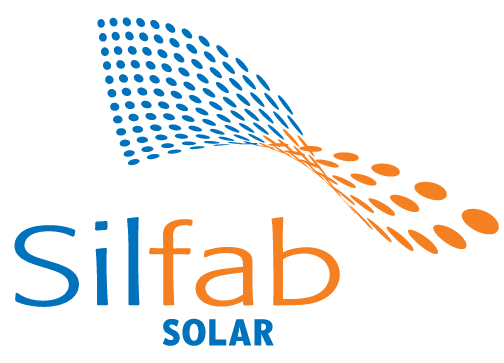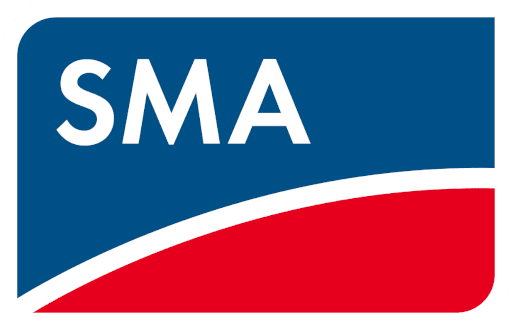
The US Department of Energy created a program named “Sunshot” to reduce photovoltaic (PV) installation costs to $1 per watt. Their goal is to lower the installation cost before consumers receive tax credits and utility incentives, which greatly offset the final cost and make solar power systems more affordable. There is still the problem of how to store electricity that is generated from
solar panels. Storage is the “holy grail” for renewable energy. The Colorado PV system owners can get the full benefit of electivity sent back to the grid during sunny hours through net metering. Net metering is an electricity policy that allows utility customers to self produce renewable energy to offset some or all of their energy costs. The electricity meter spins forward when electrify is being used at a higher rate than it is generated. It spins backward when electricity is being sent back to the grid. In essence, if you use less electricity than you generate, you can greatly reduce the cost of your electric bill monthly.
In the 1980’s, costs were about $100 per watt for PV. Costs are currently between $2-4 per watt depending on the size, site conditions and materials used. This made a decrease in the installation price of approximately 95 percent. Panel costs have dropped so that they are only about 1/3 to 1/4 of the installation cost. The rest of the cost is for inverters, racking, labor, wire and paperwork costs such as the city and county permits required and utility company requirements for interconnection to homes and businesses. Solar installers are working diligently to reduce all costs from every area.
Solar panel manufacturers are losing money or barely profitable at current market prices for solar panels, so the panel costs will likely not drop much in the short term.
From my perspective, the goal of $1/watt is inspiring, but even if the panels were free at this time, we would not be able to install them for $1/watt. Solar installation costs should drop slowly by a few percent per year while the move to solar energy increases.
The National Community Solar Partnership was created by the Office of Energy Efficiency & Renewable Energy. The mission of the partnership is to expand solar access to new demographic and geographic markets and increase deployment in low and moderate income communities. The partnership was created and announced on July 7, 2015 in a White House fact sheet. Colorado is an active partnership member in this project. At the moment, some communities cannot delve into the solar power industry. This includes people who rent homes or apartments. Buildings with little roof space cannot produce enough green energy through solar power to support the amount of residents, such as in the case of apartments and high-rise buildings. The partnership is actively working on storage methods to make the power available to these electrical customers. They are investigating on- or off-site shared solar to provide power to all markets. The PV market should increase from 5.5 to 11 percent by the year of 2020 according to their estimates.
In the interim period, most Xcel incentives are almost gone, but United Power incentives are the best in the Denver Metro area at 10 cents per watt. IREA has no incentives and is determining how to reduce net metering credits as well. Highline Electric association in northeastern Colorado has the best incentive for solar energy at $2 per watt with a maximum cap at $6,000 or 3 KW, for residential systems and up to $20,000 or 10 KW for commercial systems.
 The US Department of Energy created a program named “Sunshot” to reduce photovoltaic (PV) installation costs to $1 per watt. Their goal is to lower the installation cost before consumers receive tax credits and utility incentives, which greatly offset the final cost and make solar power systems more affordable. There is still the problem of how to store electricity that is generated from solar panels. Storage is the “holy grail” for renewable energy. The Colorado PV system owners can get the full benefit of electivity sent back to the grid during sunny hours through net metering. Net metering is an electricity policy that allows utility customers to self produce renewable energy to offset some or all of their energy costs. The electricity meter spins forward when electrify is being used at a higher rate than it is generated. It spins backward when electricity is being sent back to the grid. In essence, if you use less electricity than you generate, you can greatly reduce the cost of your electric bill monthly.
In the 1980’s, costs were about $100 per watt for PV. Costs are currently between $2-4 per watt depending on the size, site conditions and materials used. This made a decrease in the installation price of approximately 95 percent. Panel costs have dropped so that they are only about 1/3 to 1/4 of the installation cost. The rest of the cost is for inverters, racking, labor, wire and paperwork costs such as the city and county permits required and utility company requirements for interconnection to homes and businesses. Solar installers are working diligently to reduce all costs from every area. Solar panel manufacturers are losing money or barely profitable at current market prices for solar panels, so the panel costs will likely not drop much in the short term.
From my perspective, the goal of $1/watt is inspiring, but even if the panels were free at this time, we would not be able to install them for $1/watt. Solar installation costs should drop slowly by a few percent per year while the move to solar energy increases.
The National Community Solar Partnership was created by the Office of Energy Efficiency & Renewable Energy. The mission of the partnership is to expand solar access to new demographic and geographic markets and increase deployment in low and moderate income communities. The partnership was created and announced on July 7, 2015 in a White House fact sheet. Colorado is an active partnership member in this project. At the moment, some communities cannot delve into the solar power industry. This includes people who rent homes or apartments. Buildings with little roof space cannot produce enough green energy through solar power to support the amount of residents, such as in the case of apartments and high-rise buildings. The partnership is actively working on storage methods to make the power available to these electrical customers. They are investigating on- or off-site shared solar to provide power to all markets. The PV market should increase from 5.5 to 11 percent by the year of 2020 according to their estimates.
In the interim period, most Xcel incentives are almost gone, but United Power incentives are the best in the Denver Metro area at 10 cents per watt. IREA has no incentives and is determining how to reduce net metering credits as well. Highline Electric association in northeastern Colorado has the best incentive for solar energy at $2 per watt with a maximum cap at $6,000 or 3 KW, for residential systems and up to $20,000 or 10 KW for commercial systems.
The US Department of Energy created a program named “Sunshot” to reduce photovoltaic (PV) installation costs to $1 per watt. Their goal is to lower the installation cost before consumers receive tax credits and utility incentives, which greatly offset the final cost and make solar power systems more affordable. There is still the problem of how to store electricity that is generated from solar panels. Storage is the “holy grail” for renewable energy. The Colorado PV system owners can get the full benefit of electivity sent back to the grid during sunny hours through net metering. Net metering is an electricity policy that allows utility customers to self produce renewable energy to offset some or all of their energy costs. The electricity meter spins forward when electrify is being used at a higher rate than it is generated. It spins backward when electricity is being sent back to the grid. In essence, if you use less electricity than you generate, you can greatly reduce the cost of your electric bill monthly.
In the 1980’s, costs were about $100 per watt for PV. Costs are currently between $2-4 per watt depending on the size, site conditions and materials used. This made a decrease in the installation price of approximately 95 percent. Panel costs have dropped so that they are only about 1/3 to 1/4 of the installation cost. The rest of the cost is for inverters, racking, labor, wire and paperwork costs such as the city and county permits required and utility company requirements for interconnection to homes and businesses. Solar installers are working diligently to reduce all costs from every area. Solar panel manufacturers are losing money or barely profitable at current market prices for solar panels, so the panel costs will likely not drop much in the short term.
From my perspective, the goal of $1/watt is inspiring, but even if the panels were free at this time, we would not be able to install them for $1/watt. Solar installation costs should drop slowly by a few percent per year while the move to solar energy increases.
The National Community Solar Partnership was created by the Office of Energy Efficiency & Renewable Energy. The mission of the partnership is to expand solar access to new demographic and geographic markets and increase deployment in low and moderate income communities. The partnership was created and announced on July 7, 2015 in a White House fact sheet. Colorado is an active partnership member in this project. At the moment, some communities cannot delve into the solar power industry. This includes people who rent homes or apartments. Buildings with little roof space cannot produce enough green energy through solar power to support the amount of residents, such as in the case of apartments and high-rise buildings. The partnership is actively working on storage methods to make the power available to these electrical customers. They are investigating on- or off-site shared solar to provide power to all markets. The PV market should increase from 5.5 to 11 percent by the year of 2020 according to their estimates.
In the interim period, most Xcel incentives are almost gone, but United Power incentives are the best in the Denver Metro area at 10 cents per watt. IREA has no incentives and is determining how to reduce net metering credits as well. Highline Electric association in northeastern Colorado has the best incentive for solar energy at $2 per watt with a maximum cap at $6,000 or 3 KW, for residential systems and up to $20,000 or 10 KW for commercial systems.









